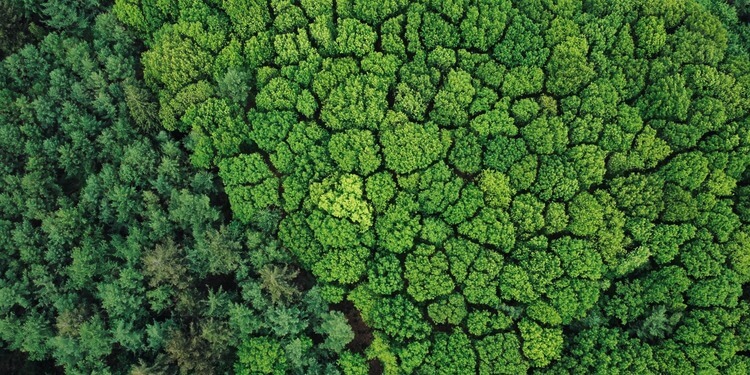Syllabus:
GS-3: Conservation, environmental pollution and degradation, environmental impact assessment
Context:
Recently, India has reached a major environmental milestone, ranking 9th globally in total forest area, according to the Global Forest Resources Assessment 2025.
Key Findings
- India’s Forests:
- India was ranked 10th in the previous assessment.
- India also maintained its 3rd position globally in the annual net gain of forest area.
- India’s forest cover is estimated at 72.7 million hectares in 2025, representing around 2% of the global total.
- Indian forests rank 5th globally in carbon sequestration, removing approximately 150 Mt of CO₂ annually during 2021–2025.
- Global Forest Overview:
- Forest extent: Total global forest area stands at approximately 4.14 billion hectares, accounting for roughly one-third (32%) of the world’s land area, equating to about 0.5 hectares per person.
- About 54% of the world’s forests are concentrated in five countries: Russia, Brazil, Canada, the United States, and China.
- Distribution: Europe has the largest forest area, accounting for 25% of the world’s total. South America has the highest proportion of forest, at 49% of the total land area.
- Net loss declining: The annual rate of net forest loss fell from 10.7 million hectares in the 1990s to 4.12 million hectares in 2015–2025.
- Asia and Europe recorded net forest gains, while Africa and South America continued net losses.
- Deforestation and expansion: Deforestation slowed to 10.9 million hectares per year in 2015–2025, down from 17.6 million in 1990–2000.
- The rate of forest expansion also decreased, from 9.88 million hectares annually in 2000–2015 to 6.78 million in 2015–2025.
- Forest extent: Total global forest area stands at approximately 4.14 billion hectares, accounting for roughly one-third (32%) of the world’s land area, equating to about 0.5 hectares per person.
- Forest Carbon Dynamics (2021–2025):
- During this period, forests acted as a net carbon sink, absorbing 3.6 billion tonnes of CO₂ annually.
- Global emissions from net forest conversion (deforestation proxy) totalled 2.8 Gt CO₂, partially offsetting the sink effect.
- Overall, forest carbon stocks increased, with a net removal of 0.8 Gt CO₂ per year—nearly half the 1.4 Gt CO₂ removed annually a decade earlier.
- The strongest forest carbon sinks were observed in Europe and Asia, removing 1.4 Gt CO₂ and 0.9 Gt CO₂ per year, respectively.
Key Challenges
- Continued Deforestation Pressure: Despite the slowdown in deforestation rates—from 17.6 million hectares annually in the 1990s to 10.9 million hectares in 2015–2025—the overall scale remains ecologically unsustainable.
- Decline in Naturally Regenerating Forests: The report indicates a steady reduction of naturally regenerating forests, even as planted forests expand.
- Climate-Linked Disturbances: Forests are increasingly impacted by climate-induced events such as prolonged droughts, flooding, pest infestations, and wildfires.
- Socioeconomic Pressures: The report underscores population-driven encroachment and rising demand for agricultural land as ongoing causes of deforestation.
Recommendations
- Promote Sustainable Land-Use Planning: The FAO urges governments to establish clear zoning to prevent forest conversion for short-term agricultural or infrastructural gains.
- Strengthen Community-Based Forest Management: The report recommends empowering local and indigenous communities through secure land tenure and participatory decision-making.
- Invest in Agroforestry and Multifunctional Landscapes: The report advocates scaling up agroforestry systems that combine food, tree, and livestock production to alleviate rural poverty and reduce pressure on natural forests.
- Support Social and Economic Alternatives for Forest Users: The GFRA recommends diversifying rural employment opportunities beyond extractive forest activities by investing in ecotourism, green jobs, and rural enterprises, thereby reducing dependency on forest clearing.
About Global Forest Resources Assessment 2025 (GFRA)
- Initiated in 1946 and being conducted every 5 years, GFRA serves as the primary global reference for data on forest area, change, management, and use.
- The assessment is conducted by the Food and Agriculture Organization (FAO) of the United Nations.
- The FRA has developed into a collaborative, data-driven platform using remote sensing, national reporting, and statistical modelling.
Sources:
Open Knowledge
News On Air
PIB

